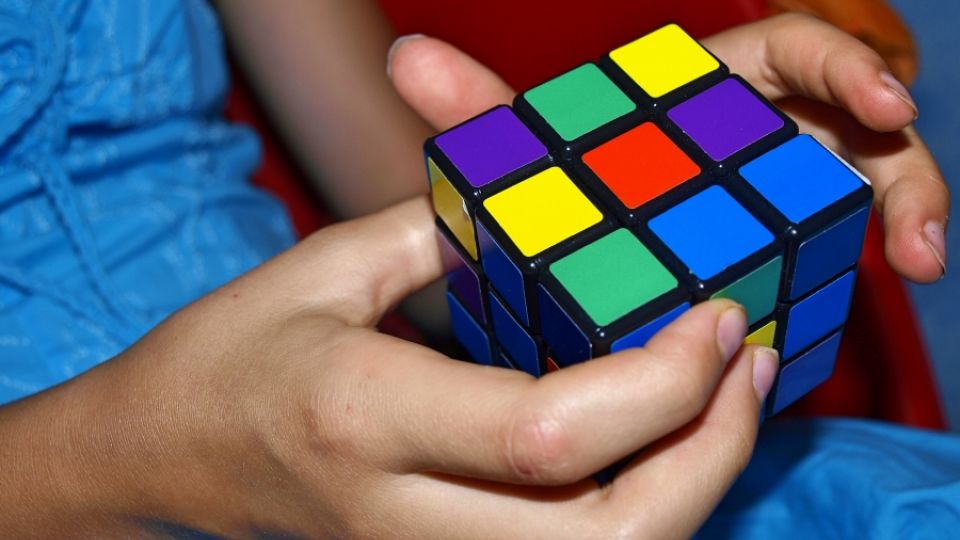Dangerous levels of toxic industrial chemicals have been found in children’s toys and hair accessories sold in the EU. The Stockholm Convention, a global, legally-binding chemical treaty, allows PBDEs — toxins that are so dangerous they are banned from new production — to enter the recycling stream and end up in the toys in children’s hands. The circular economy, say environmental health researchers, is contaminated by dangerous flame retardant chemicals.
Researchers from Arnika, an environmental health research NGO in the Czech Republic, tested a total of 47 products (16 children’s toys and 31 grooming and hair accessories) for brominated flame retardants, a class of chemicals associated with thyroid disruption, memory and learning problems, delayed mental and physical development, lower IQ, advanced puberty, reduced fertility, and other impacts.
Concerning levels of industrial flame retardant chemicals commonly found in electronics, cars, upholstery and carpet foams were found in the products. PBDEs (polybrominated diphenyl ethers) were found in 37% of the toys that were analysed and 22% of the grooming/hair accessory products. Products containing PBDE levels above 1,000 ppm are generally considered to be hazardous waste. The Stockholm Convention defines Persistent Organic Pollutants (POPs), a set of the most harmful chemicals, at this level. Two innocent-looking toys and one hair accessory contained PBDE levels over 1,000 ppm.
READ THE EXECUTIVE SUMMARY OF THE REPORT HERE
PBDEs strongly resemble PCBs in structure and activity. The Stockholm Convention currently sets the hazardous waste limit for PCBs at 50 ppm due to concerns for human health and the environment. Environmental health experts advocate for a 50 ppm health advisory level for PBDEs as well.
The highest concentration of PBDEs was found in a plastic puzzle emblazoned with a fairy tale mole that was purchased in a chain drugstore. The most toxic products included:
- The puzzle, which contained over twice the Stockholm Convention hazardous waste limit at 2,614 ppm
- A Rubik’s-like cube toy containing 1,195 ppm
- A hair clip which contained 1,623 ppm
The plastic fairy tale puzzle not only had the highest levels found in this study, but also the highest levels found when compared to an earlier study by Arnika. The earlier study sampled 95 Rubik’s-like cubes and 16 other children’s and household products from 26 countries, and exposed the pervasiveness of toxic chemicals in recycled plastic, as 90% of the products sampled contained PBDEs.
“If a chemical is so toxic that it is banned from further production, shouldn’t policy makers insure it is kept out of personal care products and children’s toys?” said Jitka Straková, co-author of the study. “We were not surprised to find toxic toys on the market because the EU has not yet taken the necessary actions to end toxic recycling. However, finding innocuous-looking products that I might buy for myself or for my niece with off-the-chart-levels of toxins was nonetheless alarming.”
NEW EU GOALS
"In addition to the fact that hazardous substances burden the environment, they are also responsible for damage to the nervous and reproductive systems, and are associated with reduced intelligence and concentration in young children. Politicians should take a stand for health and for the environment and prevent such poisons from becoming ingredients of recycled plastic toys,” said Karolina Brabcová, Arnika’s Toxics-Free Recycling Campaign Coordinator, mother of three and expert on toxic substances. "With the recently established, and ambitious, target of 70% recycling rate by 2035, the EU should also address the problem of legacy chemicals contamination of recycled materials.”
Researchers say the circular economy must be protected by preventing contamination from toxic plastics from entering the waste stream.
“Toxic industrial flame retardants have no place in new products,” commented Dr. Joseph DiGangi, IPEN Science and Technical Advisor. “The Stockholm Treaty’s expert committee has warned against the practice of allowing this class of harmful chemicals to be recycled and recommended that they be eliminated from the recycling stream. As the committee has warned, failure to swiftly eliminate brominated chemicals from the recycling stream means wider human and environmental contamination is inevitable. The chemical will disperse into places where its removal is not technically or economically feasible. In the end, the credibility of recycling will suffer. “
In a new campaign called Toxics-Free Recycling, Arnika calls for a ban on the use of toxic substances in plastics and more support for safe recycling, and encourages people to join the appeal at www.recyklujbezjedu.cz.
Read more:
Toy or Toxic Waste? An Analysis of 47 Plastic Toy and Beauty Products Made from Toxic Recycling (english)
Toxic Recyclation - How the Poor Waste Management Contaminates Everyday Items in the Czech Republic (czech)
Toy or Toxic Waste? What an answer of the Stockholm Convention will be? (czech)
Editors and reporters, please contact Arnika’s expert on toxic chemicals Karolina Brabcova (+420 731 321 737, This email address is being protected from spambots. You need JavaScript enabled to view it.) or the spokeperson Martin Holzknecht (This email address is being protected from spambots. You need JavaScript enabled to view it.) for more information, photographs of the products and to arrange interviews with the researchers.
Arnika is a Prague-based Czech non-governmental organization focused on nature conservation, toxics and waste, and public participation in decision making on environmental issues. Arnika – Toxics and Waste Programme has been serving as IPEN coordination center for Central and Eastern Europe (CEE Region) since 2008.
IPEN is a global network of non-governmental organizations working in over 100 countries to reduce or eliminate the harm to health and the environment from toxic chemicals and metals.







